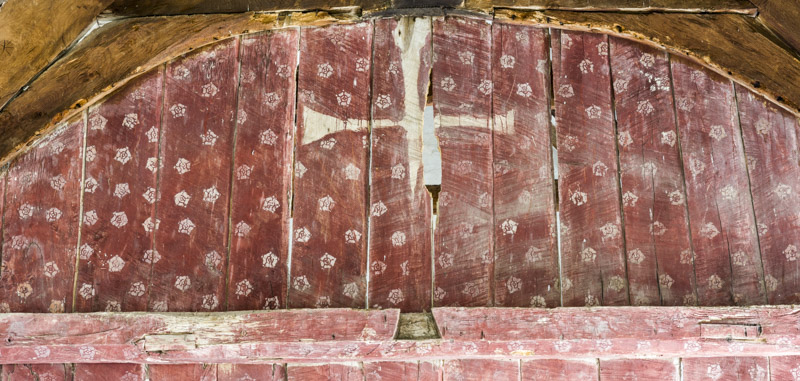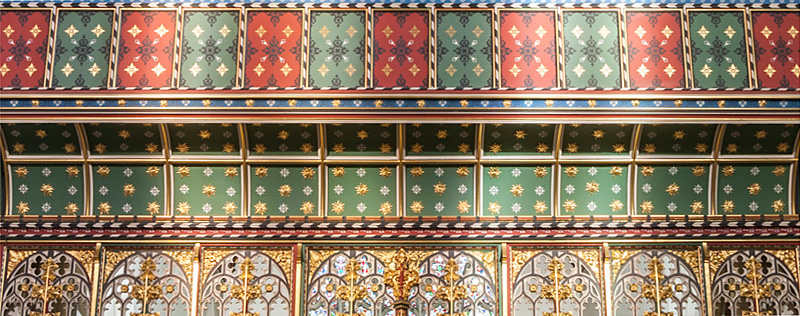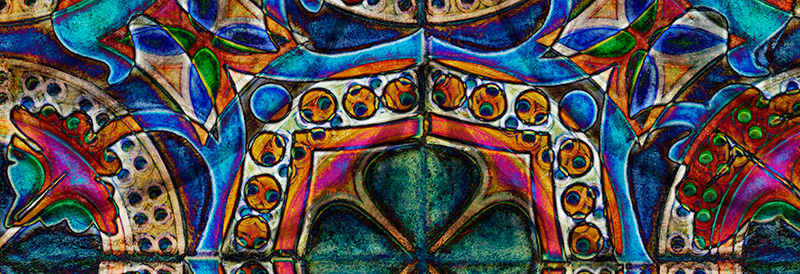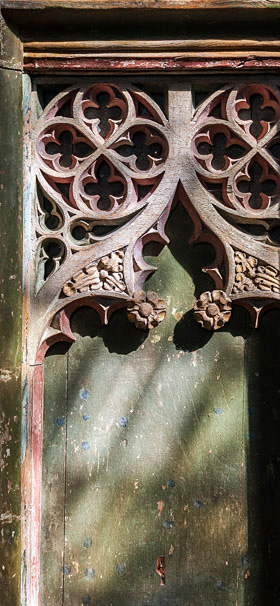Medieval Pattern
Churches were full of images before the Reformation and would have been colourful and theatrical spaces. But from the middle of the sixteenth century, images of saints were removed and paintings of the saints and scenes from their lives, and from the Bible, were painted over.
While figures were stripped from the altars, and the rood figures of the crucified Christ taken down from over the rood screens separating the nave from the chancel, the abstract pattern on tiles, screens, tombs and other surfaces remained. Similarly, high status houses and castles were furnished rather than simply having bare stone walls. Over the centuries patterned surfaces have usually lost their colour, and the design has only survived if it was carved in relief or was inherently polychrome (such as stained glass, or ceramics). Where medieval coloured surfaces remained, this colour was sometimes stripped in the nineteenth and twentieth centuries, once the aesthetic of the plain surface and of natural materials was in the ascendency.

In the case of medieval wall paintings, while such work was sometimes wilfully destroyed in the nineteenth century, it is now painstakingly conserved, especially in the case of pictorial work. In contrast, the medieval pattern preserved as relief carving, on ceramic tiles, and as patterns in silver stain and paint on glass has received little attention by art historians. The abstract decorative arts are found literally and conceptually on the margins of medieval art. Similarly, incidental images – animals, heads and fantastic creatures – are also found around the edges of medieval art and as architectural carving, often high up on both interior and exterior walls of medieval churches.

The Gothic Revival of the nineteenth century effected a renaissance of the painted surface in the interior decoration of churches, imitating medieval practice. In many cases it was itself purged by the Modernism of the twentieth century, as walls, organ lofts and woodwork were stripped of their colour. Polychromy was occasionally employed by those who defied the spirit of the times, and, in the later twentieth century, Victorian painted schemes have occasionally been restored.
The Sulien books on the tiles at Strata Florida and the medieval grotesques at Gresford are an attempt to draw fresh attention to these kinds of medieval patterns and marginal architectural imagery. They feature colour images based on the patterns and imagery of the Middle Ages, which maintain a tension between an imaginative and contemporary response and the authentic reproduction of their sources.

Sulien Books
art and craft, ancient and modern
